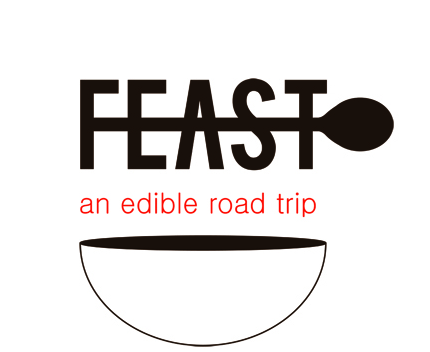On Scrunchions and Survival
After our morning on the water with Bruce, it was time to eat our hard-earned catch. We headed over to a nearby one-room schoolhouse, which was built in the early 1900’s, then closed in the mid-60’s due to resettlement. In 2005, it became the Random Passage Welcome Centre, gift shop, and tearoom. It’s the first stop for tourists heading down the winding road that leads to the film set for Random Passage, a TV mini series from 2000 based on Bernice Morgan’s best selling work of historical fiction.
In the beautiful, sunlit room (which, like any true Newfoundland gift shop, was laden with sewn and knitted goods) we warmed up with tea and coffee.
He served us each a huge filet of our own freshly caught cod, along with the tongues, britches (cod roe in their ‘original packaging’), and cod head for sampling. Of all the ways we’ve had cod in Newfoundland, both on this trip and last fall, we hadn’t yet tried it in the traditional way!
For dessert we had a warm gingerbread cake with custard sauce and steamed pudding with rum sauce. It was the perfect finish to our last cod feast of our trip.
Incredibly full, we continued on to the Random Passage site. One of the most charismatic tour guides we’ve ever met, Dora, greeted us when we arrived, showed us around the site, and then told us the main plot-line of Bernice Morgan’s book.
While the buildings were constructed for the mini series, the site was once home to a real village; the last family left in 1952, and now the only remnants of the former community are a few root cellars.
This particular site was chosen for the series because it’s easily accessible to accommodation in the surrounding area, and because there are absolutely no signs of civilization in view. The structures, which include a few houses, a schoolhouse, cod flake, church, and a graveyard, were all built to depict, as accurately as possible, a typical outport fishing village in the early 1800’s.
The walls are made mostly of hand-cut spruce, and “insulated” with moss, which was collected and stuffed into the cracks. Insulating was a never-ending task, since the strong coastal winds constantly dislodged.
The windows of the current structures are made of glass, but in the 1800’s they would have been made of wooden shutters and parchment.
The beds were constructed of dry grass, the floors of dirt, and the early fireplaces had no chimneys, so keeping warm also meant living in a smoky home.
The Random Passage story depicts the Andrews family’s exile from England, and their subsequent arrival in (the fictional) Cape Random, Newfoundland. The story is full of intrigue, sex, scandal, murder, and deceit (so it’s awesome!), but it’s also a close historical look at community and survival in Newfoundland.
It is strange to think of the hugely important role of cod for the survival of early settlers in Newfoundland; their survival depended entirely on their ability to catch, process, and sell cod in exchange for supplies. Whole communities focused on this task. Now, people can only fish for cod three weeks out of the year, so while it’s still a hugely important cultural icon, Newfoundlanders can no longer rely on it for survival.
One thing we found fascinating was the cod-cleaning hut at the Random Passage site; it was built on stilts over the water, with a table for fileting the fish and a hole cut underneath for dumping the guts. In other words, it was setup exactly the same as Bruce’s. So much has changed for coastal Newfoundlanders since the 19th century, and yet in some ways, nothing has changed at all.
Our cod lunch was even more meaningful in light of our experiences before and after it. Thanks to Bruce, Chef Kyle, Dora, and the staff at the Visitor Centre for an incredible time in New Bonaventure.
-DV














